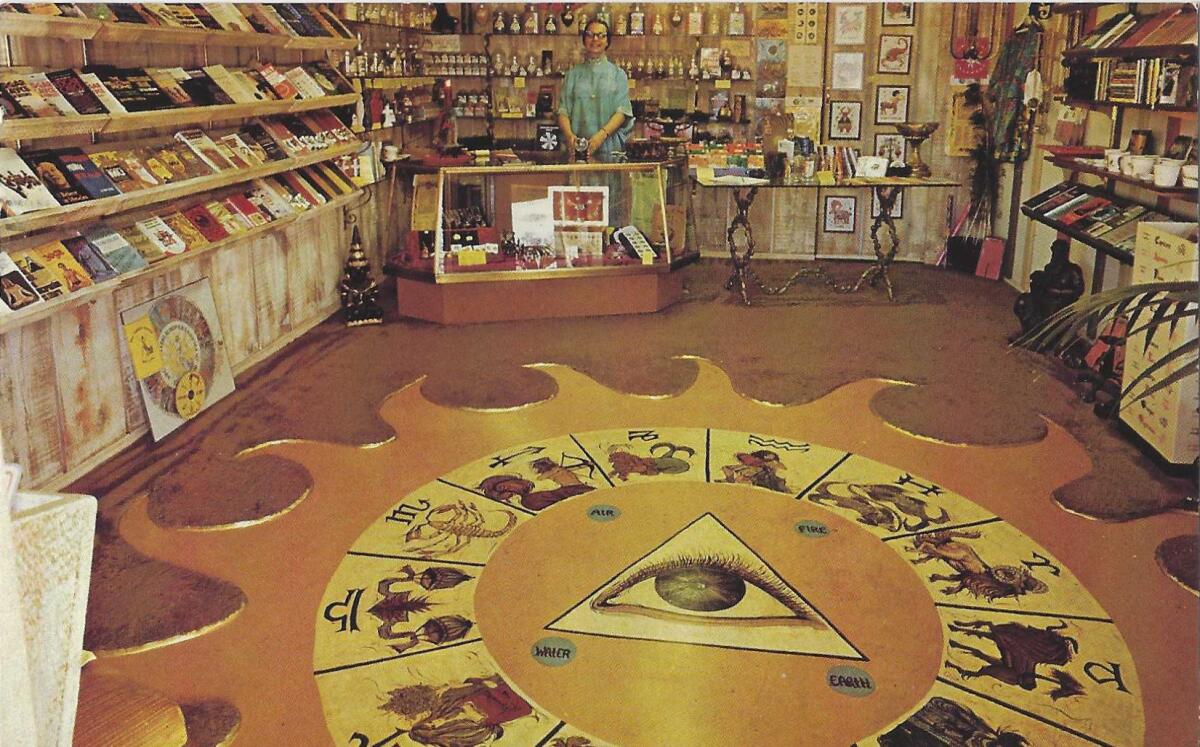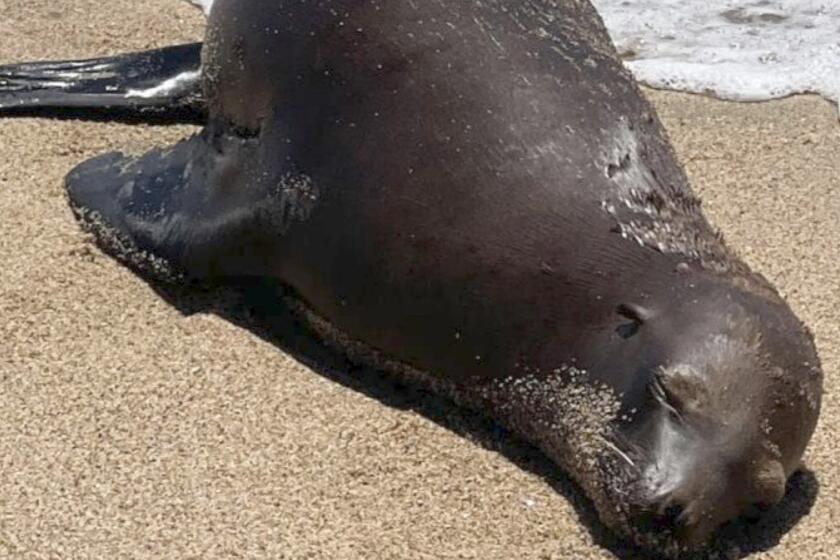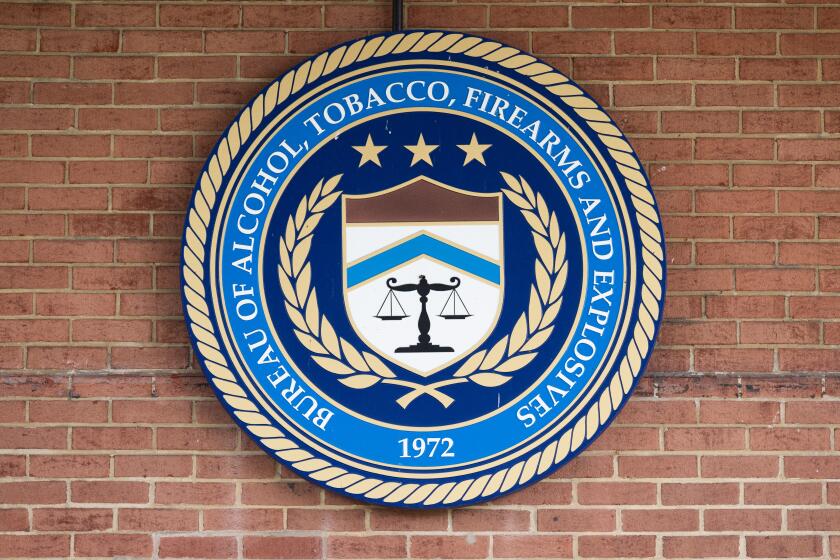San Francisco politics is like a ‘gladiator ring.’ These women fought their way to change America

Good morning. Here’s what you need to know to start your day.
- How San Francisco became a launching pad for women in politics.
- How Harris and Trump are ‘microtargeting’ voters.
- These are the most fascinating L.A. museums you’ve never heard of.
- And here’s today’s e-newspaper
Sign up for Essential California
The most important California stories and recommendations in your inbox every morning.
You may occasionally receive promotional content from the Los Angeles Times.
San Francisco politics is like a ‘gladiator ring.’ These women fought their way to change America
San Francisco — infamous for its rugged hills, vibrant homes and appearances from Karl the Fog — has distinguished itself as one of the country’s most fertile launching pads for fierce female politicians.
Dianne Feinstein, a Bay Area native, was the country’s longest-serving female senator in history, before passing away at age 90 last year. She was the first woman to chair the Senate Rules Committee and Select Committee on Intelligence, and San Francisco’s first female mayor, stepping up in a period of mourning, after the assassination of then-Mayor George Moscone and Supervisor Harvey Milk, California’s first openly gay elected official.
When Barabara Boxer entered the Senate with her friend Feinstein in 1993, California became the first state with two female senators.
Nancy Pelosi became the first woman to hold the position of Speaker of the House and worked alongside four presidents to help pass landmark legislation.
And now the national spotlight is on Kamala Harris. The current Vice President served as San Francisco’s first female district attorney and later, as California’s first female attorney general. If she becomes the nation’s first female president, it will be the greatest addition to San Francisco’s extensive resume of female firsts.

How has San Francisco equipped female politicians like Feinstein, Boxer, Pelosi and Harris to ascend from its cutthroat political sphere and become dexterous, powerful leaders across California and the country?
My colleagues Jessica Garrison and Hannah Wiley recently reported on San Francisco’s powerful history of female politicians. Here is what they found.
How San Francisco’s female politicians went from ‘behind the scenes’ to front and center
In the 1980s and 90s, San Francisco was characterized by its extraordinarily diverse population: It was a melting pot of wealthy, middle and poor class; Black, white, Latino and Asian; transplants from other states and countries and groups engaged in the fight for civil rights, including gay and women’s rights activists, the Black Panthers and the Chicano Movement.
The first generation of San Francisco’s barrier-breaking women — Feinstein, Boxer and Pelosi — had all “been working behind the scenes” as activists, organizers and fundraisers, Boxer told the Times. “And when the women’s movement really started, we said, ‘OK, it’s time to step out.’”

Attuned to the city’s mechanisms and culture, their policies and campaigns were well-received by the San Francisco electorate.
“The people there came from everywhere, to find equality and find a voice,” Boxer said. “And when they looked at us, they said, ‘This is a good voice for me.’ … It was fertile ground for a qualified woman to get a chance.”
It takes a village to win an election
Many observers also credit John Burton, the former congressman, state Senate leader and California Democratic Party chair, as a major player in helping these women reach new heights.
Burton, with his brother, Phillip Burton, sister-in-law, Sala Burton, and political ally, Willie Brown, made up the Burton-Brown political organization, a force that sculpted San Francisco, state and national politics for decades.
Unlike other political machines across the country, the Burton-Brown organization was receptive to women having power and helped boost several of the city’s prolific female leaders.
Pelosi worked with them as a fundraiser and strategist. She caught Sala’s eye for her strategic acumen and leadership potential. In the hospital while dying of cancer, Sala told her brother-in-law John, Pelosi and other confidants that she wanted Pelosi to take her place in Congress. John became Pelosi’s campaign chair, and in 1987, Pelosi was elected to Congress.
Similarly, Boxer and Fiona Ma, the current state treasurer, worked for John, as a legislative aid and field representative respectively. Boxer eventually won the congressional seat he vacated in 1982.
And Brown, who was an early mentor for Harris, appointed her to seats on the state Unemployment Insurance Appeals Board and the California Medical Assistance Commission before she served as San Francisco district attorney in 2003. (The two also briefly dated.)
Their regional rise to power symbolized something bigger
Though San Francisco’s politics are notorious for being cutthroat, or as Harris put it during her eulogy at Feinstein’s funeral, “a bare-knuckled sport,” the unwavering determination and qualifications of these women helped them become seasoned politicians, emerge out of local politics and effectively lead on the state and national levels.
They helped pave the way for others to become fearless political leaders.
Harris has mentored many women, including current San Francisco mayor London Breed and Lateefah Simon, a front-runner to represent Oakland in Congress.
For her part, Pelosi used her fundraising and strategizing skills to advance the careers of several other women, such as Rep. Anna Eshoo (D-Menlo Park) and Rep. Zoe Lofgren (D-San Jose).
“We didn’t realize until we got there that women were depending on us,” Boxer said. “That stuck with us. It wasn’t just representing our district, but representing women everywhere.”
Today’s top stories

How Harris and Trump are ‘microtargeting’ voters with appearances on podcasts, ‘The View’ and Howard Stern
- The heightened focus on nontraditional media is the latest iteration of microtargeting, efforts by campaigns to reach specific blocs of voters.
- Harris has spoken to eyebrow-raising hosts, such as Alex Cooper of “Call Her Daddy,” an explicit podcast that boasts millions of listeners and is reminiscent of the early days of Stern’s radio show because of its frank sexual banter.
Severe COVID raised the risk of heart attacks and strokes, a study found
- The risk was comparable to people who had a history of heart disease but who hadn’t gotten COVID, according to the study, which analyzed more than 10,000 COVID cases.
- The news comes as public health officials expect another spike in infections this autumn and winter.
- Doctors are urging everyone age 6 months and older to get an updated COVID vaccine, ideally before Halloween.
LAPD’s interim chief overruled a finding that cleared an officer in the fatal shooting of man asleep with gun
- The officer, Sean Steelmon, could now face punishment after interim Chief Dominic Choi found the killing was not justified, citing serious tactical mistakes leading up to the deadly encounter in Canoga Park.
- Steelmon last year fatally shot 44-year-old Oscar Lopez, whose family has filed a wrongful death government claim.
What else is going on
- Trading barbs at debate, Gascón tried to cut into Hochman’s lead in L.A. D.A. race.
- The end of Hahn Hall? L.A. County took its first step to buy Gas Company Tower.
- The former chief financial officer at Tom Girardi’s law firm agreed to plead guilty to federal fraud charges.
- A convicted arsonist was arrested on suspicion of starting two more Northern California wildfires.
- Telsa announced a fifth recall for its Cybertruck within the first year of electric vehicle’s release.
- Robert Fitzpatrick, the former president of the California Institute of the Arts who spearheaded the acclaimed 1984 Olympic Arts Festival in Los Angeles, died at 84.
Get unlimited access to the Los Angeles Times. Subscribe here.
Commentary and opinions
- Donald Trump’s $59.99 Bible is just what Oklahoma schools ordered, observes Randall Balmer, a professor of religion at Dartmouth. Isn’t that special?
- The Editorial Board endorsed Proposition 2 to repair California’s many dilapidated schools.
- Comics master Adrian Tomine draws insights on the creative process.
This morning’s must reads
How L.A. became America’s largest jail system: At almost every moment in its history, Los Angeles has been building a new jail — or debating whether to.
Other must reads
- Scientists have long urged NASA to search for signs of life near Jupiter. Now it’s happening.
How can we make this newsletter more useful? Send comments to [email protected].
For your downtime

Going out
- 🖼️ Here’s a look at the most fascinating L.A. museums you’ve probably never heard of.
- 🚌 Sandra Bullock, Keanu Reeves and director Jan de Bont revisited “Speed” 30 years later at Beyond Fest.
- 🌲 Check out these six fall road trips to California mountain towns for pine-scented air and cozy vibes.
- 🍿 Pharrell Williams’ biopic is a Lego movie that hits theaters this week. He says the film shows his “soul’s intention.”
Staying in
- 🎶 Grammy voting is open. Taylor Swift, Beyoncé and maybe Billy Joel are among our critic’s predictions for who could be nominated.
- 🐴 TV used to bore Kristin Scott Thomas, but “Slow Horses” changed her mind.
- 📺 Did you enjoy “La Máquina” on Hulu? Here are other Spanish-language TV series worth watching.
- 👨🍳 Here’s a recipe for Curtis Stone’s Italian pork sausage rolls.
- ✏️ Get our free daily crossword puzzle, sudoku, word search and arcade games.
And finally ... what’s a good book to read this fall?
What book have you recently enjoyed and would recommend to a friend?
Larry writes: “‘Watergate’s Unexpected Hero: The Life of Peter W. Rodino Jr.’ This is a biography of the man who became a national hero with his fair and bipartisan leadership of the impeachment of Richard Nixon 50 years ago. It is also a reminder of a time when civility and facts were the key features of American political discourse and policymaking.”
Feel free to email your book picks to [email protected], and your response might be included in the newsletter this week.
And pictured above is a postcard of the Spell occult bookstore formerly located in Torrance. It’s from the collection of Times columnist Patt Morrison, who looked at how Los Angeles was — and continues to be — a bookstore boomtown.
Have a great day, from the Essential California team
Ryan Fonseca, reporter
Defne Karabatur, fellow
Andrew Campa, Sunday reporter
Hunter Clauss, multiplatform editor
Christian Orozco, assistant editor
Stephanie Chavez, deputy metro editor
Karim Doumar, head of newsletters
Check our top stories, topics and the latest articles on latimes.com.
Sign up for Essential California
The most important California stories and recommendations in your inbox every morning.
You may occasionally receive promotional content from the Los Angeles Times.






